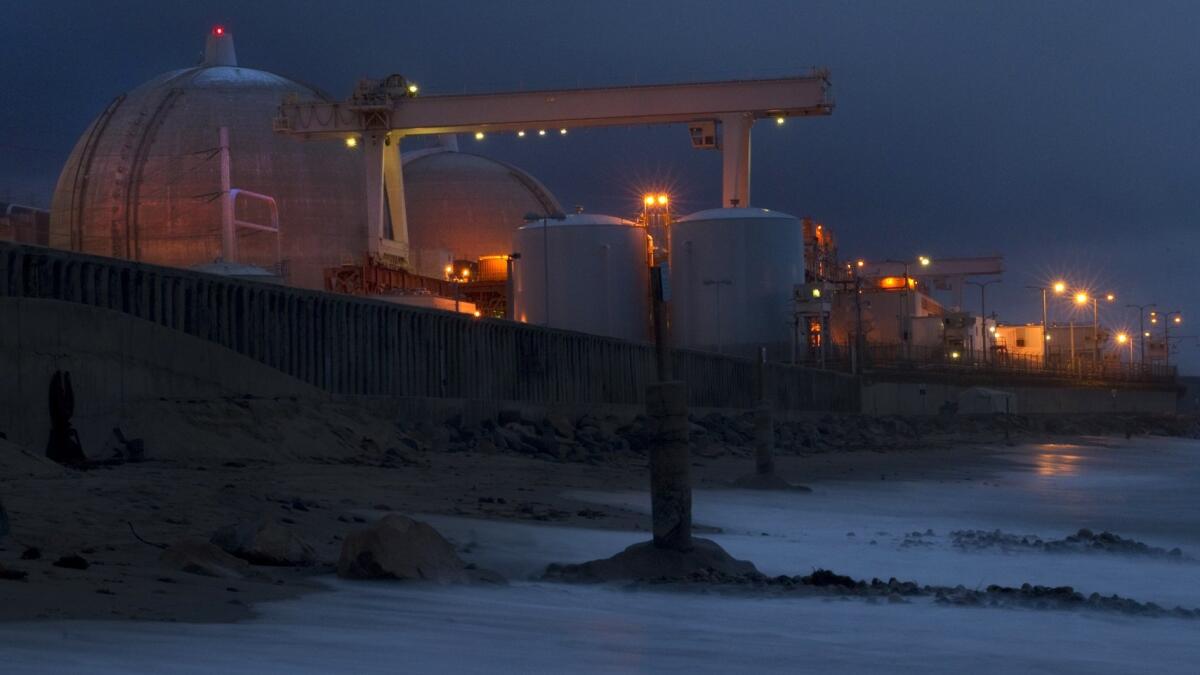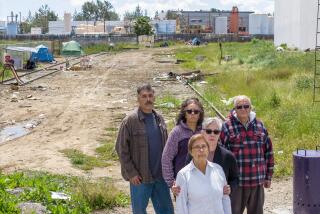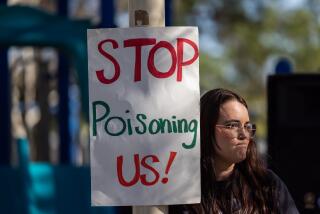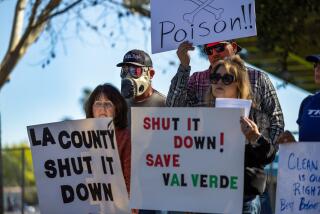Op-Ed: The San Onofre nuclear plant is a ‘Fukushima waiting to happen’

Southern California Edison is keeping 3.6 million pounds of lethal radioactive waste at the shuttered San Onofre nuclear plant in San Clemente.
The waste poses a significant threat to the health, safety and economic vitality of the region’s more than 8 million residents. But Edison’s plan for storing it is unnerving at best.
The idea is to bury the spent fuel on site, about 100 feet from the ocean and just a few feet above the water table. Edison has already begun transferring the waste from cooling pools into specially designed steel canisters. The containers are prone to corrosion and cracking, and cannot be monitored or repaired. Work crews even discovered a loose bolt inside one of the canisters earlier this year.
But flawed storage containers are just one of many worrisome aspects of the scheme. San Onofre sits on an active earthquake fault, in an area where there is a record of past tsunamis. It is close to Interstate 5, the railroad line that Amtrak runs on, and the Marines’ Camp Pendleton.
Unlike the case of Fukushima, there are no federal or state evacuation plans for a disaster at San Onofre.
The ocean is expected to keep rising over the next few decades, bringing seawater closer to the canisters. If hairline cracks or pinholes in the containers were to let in even a little bit of air, it could make the waste explosive.
And although San Onofre is in a no-fly zone, it is not being guarded with radar and surface-to-air-missiles, as nuclear aircraft carriers are. It is protected by a handful of guards carrying pistols.
This leaves the site susceptible to terrorist attacks. San Juan Capistrano Councilwoman Pam Patterson warned President Trump of this vulnerability at a roundtable meeting in May. She reminded him that, in 2001, terrorists were targeting nuclear power plants in addition to the World Trade Center and the Pentagon.
Patterson also pointed out that some of the 9/11 terrorists received their flight training at San Diego’s Montgomery Field, only 50 miles from San Onofre, which is itself only 62 miles from downtown Los Angeles. The power plant, she told Trump, is a “Fukushima waiting to happen.”
When it was discovered that San Onofre’s reactor was so flawed that the plant had to be shut down, the former prime minister of Japan, Naoto Kan, testified in San Diego. He said that if the radioactive cooling pools at Fukushima had caught fire, he was prepared to evacuate not only Tokyo, with its population of 9 million people, but also the larger metropolitan area of 38 million, including regions 160 miles away from the plant. Martial law would have been declared.
Had the fire proved uncontainable, Kan said, nobody would have been able to move back to the region for 100,000 years. “The future existence of Japan as a whole was at stake,” Kan told a British newspaper later. “Something on that scale, an evacuation of 50 million, it would have been like a losing a huge war.” His words echoed those of Mikhail Gorbachev, who once remarked that a second explosion at Chernobyl would have rendered Europe uninhabitable.
Enter the Fray: First takes on the news of the minute from L.A. Times Opinion »
Unlike the case of Fukushima, there are no federal or state evacuation plans for a disaster at San Onofre. Local first responders would be tasked with an impossible mission.
Experts say there are safer storage configurations that Southern California Edison could implement. It could avoid storing the waste in thinly walled canisters, for instance, keeping it in cooling pools until casks with thicker walls are available. It could relocate the waste to a site known as “the mesa,” which is on the other side of the the freeway and roughly 80 feet higher than the beach site — away from rising seas, potential tsunamis and periodic storm surges. It could also maintain a cooling pool on site for emergency transfer efforts in the event of a cracked canister or terrorist attack.
But these are all short-term solutions. The only real long-term solution is for Edison to develop adequate storage technology — a system that is not prone to severe leaks and therefore does not compromise the health of future generations.
Many Americans are focused on the potential threats posed by North Korea’s nuclear program and Russian interference. But for those of us in Southern California, equal or worse terrors are lurking closer to home.
Steve Chapple is a fellow at the Samuel Lawrence Foundation and co-author of “Breakpoint: Reckoning with America’s Environmental Crises.”
Follow the Opinion section on Twitter @latimesopinion or Facebook
More to Read
A cure for the common opinion
Get thought-provoking perspectives with our weekly newsletter.
You may occasionally receive promotional content from the Los Angeles Times.






